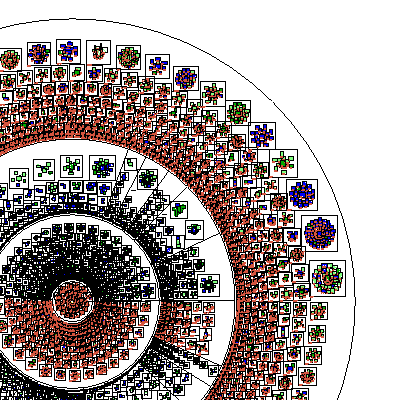
The Code
Linux is also unique from other operating systems in that it has no single owner. Torvalds still manages the development of the Linux kernel, but commercial and private developers contribute other software to make the whole Linux operating system.
In this section, the parts of the Linux operating system will be examined.
The Kernel
All operating systems have kernels, built around the architectural metaphor that there must be a central set of instructions to direct device hardware, surrounded by various modular layers of functionality. The Linux kernel is unique and flexible because it is also modular in nature.
Modularity is desirable because it allows developers to shed parts of the kernel they don't need to use. Typically a smaller kernel is a faster kernel, because it isn't running processes it does not need.
If a device developer wants a version of Linux to run on a cell phone, she does not need the kernel functionality that deals with disk drives, Ethernet devices, or big monitor screens. She can pull out those pieces (and others), leaving just the optimized kernel to use for the phone.
The kernel of the Window operating system (which few people outside of Microsoft are allowed to look at without paying for the privilege) is a solidly connected piece of code, unable to be easily broken up into pieces. It is difficult (if not impossible) to pare down the Windows kernel to fit on a phone.
This modularity is significant to the success of Linux. The ability to scale down (or up) to meet the needs of a specific platform is a big advantage over other operating systems constrained to just a few possible platforms.
Modularity also effects stability and security as well. If one piece of the kernel code happens to fail, the rest of the kernel will not crash. Similarly, an illicit attack on one part of the kernel (or the rest of the operating system) might hamper that part of the code, but should not compromise the security of the whole device.
The Operating System
Developers need special tools (like the compilers and command lines found in GNU) to write applications that can talk to the kernel. They also need tools and applications to make it easy for outside applications to access the kernel after the application is written and installed.
This collective set of tools, combined with a kernel, is known as the operating system. It is generally the lowest layer of the computer's software that is accessible by the average user. General users get to the operating system when they access the command line.
Linux provides powerful tools with which to write their applications: developer environments, editors, and compilers are designed to take a developer's code and convert it to something that can access the kernel and get tasks done.
Like the kernel, the Linux operating system is also modular. Developers can pick and choose the operating tools to provide users and developers with a new flavor of Linux designed to meet specific tasks.
The Environments
The windows, menus, and dialog boxes most people think of as part of the operating system are actually separate layers, known as the windowing system and the desktop environment.
These layers provide the human-oriented graphical user interface (GUI) that enables users to easily work with applications in the operating system and third-party applications to be installed on the operating system.
In Linux, there a lot of choices for which windowing system and desktop environment can be used, something that Linux allows users to decide. This cannot be done in Windows and it's difficult to do in OS X.
Like the operating system and kernel, there are tools and code libraries available that let application developers to more readily work with these environments (e.g., gtk+ for GNOME, Qt for KDE).
The Applications
Operating systems have two kinds of applications: those that are essential components of the operating system itself, and those that users will install later. Closed operating systems, like Windows and OS X, will not let users (or developers) pick and choose the essential component applications they can use. Windows developers must use Microsoft's compiler, windowing system, and so on.
Linux application developers have a larger set of choices to develop their application. This allows more flexibility to build an application, but it does mean a developer will need to decide which Linux components to use.
The Distributions
This is the highest layer of the Linux operating system: the container for all of the aforementioned layers. A distribution's makers have decided which kernel, operating system tools, environments, and applications to include and ship to users.
Distributions are maintained by private individuals and commercial entities. A distribution can be installed using a CD that contains distribution-specific software for initial system installation and configuration. For the users, most popular distributions offer mature application management systems that allow users to search, find, and install new applications with just a few clicks of the mouse.
There are, at last count, over 350 distinct distributions of Linux.
0 komentar:
Posting Komentar